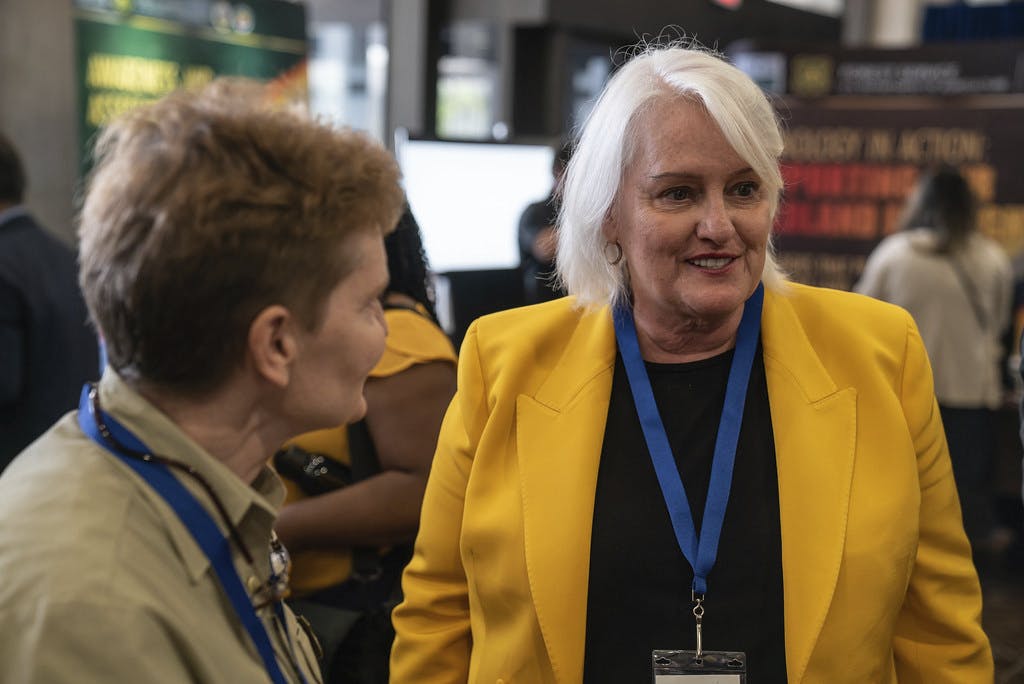Agencies Meet Key AI Goals Amid Call for More Experimentation
Federal leaders call for prioritizing artificial intelligence and its applications to critical cybersecurity and workforce initiatives.

Federal agencies have completed 180-day goals set forth in the White House’s October executive order on AI as they work on new implementation guidance and explore how to leverage it for pressing cybersecurity priorities, officials said.
Some of the completed goals include developing AI safety and security guidelines for critical infrastructure operators, launching the AI Safety and Security Board, and creating new pilots for AI to find and address vulnerabilities in software for national security purposes, according to an April 29 White House release.
Agencies are amid long-term priorities to develop secure and safe AI following the executive order and subsequent implementation guidance from the Office of Management and Budget (OMB). Encouraging the federal workforce to learn about AI and understand how to use it can be key to innovation, according to Federal CIO Clare Martorana.
“We’ve made generational investments in things like our national labs. … The capabilities at those labs could actually help us as a federal ecosystem go a little faster, farther,” said Martorana during an April 16 Venable event in Washington, D.C. “Can we create a sandbox where agencies that don’t necessarily have a huge amount of funding could learn about generative AI?”
AI is showing promise in various cybersecurity applications. For one, it could help thwart malicious threat actors and support zero trust.
“We can’t rely on stock analysts to be able to get in front adversaries — we have to rely on artificial intelligence. We need to lean on all of those signals and the analysis,” said Sean Connelly, recently departed zero trust director at CISA, at the event. “It’s really going to be interesting in the next couple of years seeing how AI can help build out what we’re trying to do with zero trust.”
Federal Highway Administration CTO Arthur Chin noted that AI conversations a few years ago were merely theoretical and now can make large impacts in reducing manual workloads.
“We can leverage AI to a multiplier capacity or even take some of the administrative or mundane or standardized tasks off our plate so that we can use our minds instead of our hands. I think that’s really a great benefit for us because the federal workforce is closer to retirement than they are coming in to the workforce,” said Chin.
Chin encourages agencies to embrace more experimentation with AI.
“There are so many ways that the business area and the mission can be enabled or benefit from AI,” said Chin. “You can set up safe places, set up sandboxes, set up proof of concepts so that you can fail in a safe way and learn how to fail, then learn how to pivot and succeed.”
The officials pointed to resources like the Technology Modernization Fund (TMF) to help fund some initiatives on agency wish lists.
Martorana said 83% of TMF’s investments of $850 million have been focused on cybersecurity since May 2020. TMF is currently seeking proposals for AI projects.
“That’s really the focus. I think we’re going to see from our side is being open to how AI can be used and not have either the TMF or CISA or OMB come out and dictate how it can be used with a more manifesting option for the agencies themselves to now adopt it,” said Connelly, who had also served on TMF’s board for some time. “There’s a clear recognition that we need to accelerate the adoption of AI, and that’s why I see the TMF focused on it.”
Martorana called for industry to assist agencies on AI implementation for key areas in cyber resiliency and workforce policy. The agency had been seeking public comments through Monday to help inform responsible procurement of AI by federal agencies.
“We can’t get better as a government unless we have that partnership with the private sector and academia and all of this,” she said. “[We need a] whole community of people that are working hard to make sure that we’re delivering for the American people.”
This is a carousel with manually rotating slides. Use Next and Previous buttons to navigate or jump to a slide with the slide dots
-

How Health Care Leaders Should Plan for Building Cyber Resiliency
Policy leaders recommend health care organizations implement tools like encryption and multi-factor authentication to protect their data.
4m read -

HHS Aligns AI, Tech Strategy Under its Policy Agency
ONC will have a new name and oversee more c-suites to better shape the future of health care technology policy.
3m read -

White House Gets New Deputy National Cyber Director
Harry Wingo previously worked as a professor at the National Defense University's College of Information and Cyberspace.
2m read -

CrowdStrike Outage Puts Spotlight on Cyber Resiliency, Continuous Assessments
Cybersecurity experts say comprehensive strategies protect against vulnerabilities amid system interruptions and outages.
4m read









